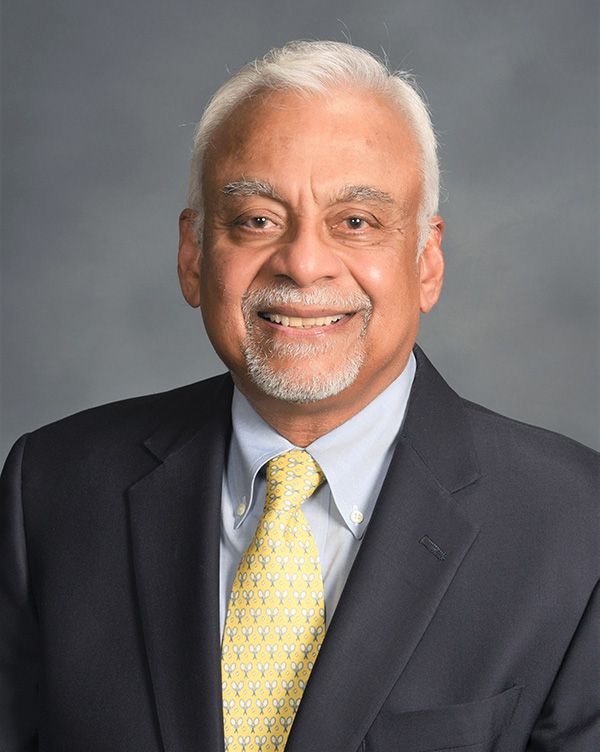PPL Corp. supervising engineer Scott Richard Thomas ’10G ’15 MBA knows the power of connections.
His nine-years-and-counting career at a major U.S. energy company took off following a research project he did with the utility—a key part of his graduate studies in Lehigh University’s Energy Systems Engineering (ESE) professional master’s program.
The ESE experience made such an impact on Thomas that he continued his involvement even after graduation—giving lectures, attending poster sessions, and sponsoring an ESE project through his employer, PPL.
“I found a lot of value in completing a utility project during my time at Lehigh,” says Thomas, “and I wanted to provide that same valuable learning experience to someone else.”
That someone else was Fouad Haddad ’19G, who had recently earned a bachelor’s degree in physics and was looking for his next step.
“I knew I wanted to pursue an advanced degree of some kind,” says Haddad, “but I wasn’t sure exactly what I wanted to study.”
Haddad says a conversation with Rudy Shankar, director of the ESE program—10-month, 30-credit experience with an extensive applied industrial project—gave him confidence that a master’s degree in Energy Systems Engineering (M.Eng.) would provide a competitive edge and prepare him for a leadership role in the energy sector.
Predictive analytics in practice
Early in the program, Haddad was paired with Thomas as his project advisor, and tasked with examining how PPL could maintain reclosers in the electrical grid with the greatest efficiency.
Reclosers are critical pieces of equipment that detect and interrupt fault currents in overhead electrical networks. (Conditions that cause fault currents include lightning, high winds, and trees coming into contact with power lines.)
When electric power goes out, utility companies are expected to restore it quickly, and they rely on reclosers to identify and isolate the source of the problem so workers can resolve the issue.
If a recloser fails, the outage spreads, and it will require an onsite resolution. That takes time, costs money, and frustrates customers.
Haddad and Thomas, who is the planning supervisor at PPL’s Distribution Control Center, used predictive analytics to prioritize the replacement of certain reclosers over others to prevent as many recloser failures as possible.
“We used an equation to determine how the number of operations of a recloser behaves as a function of the fault current it experiences,” Haddad says. From there, a fault exposure rating was found, which determines how much life has been taken off the recloser, and thus, when it absolutely needs to be replaced.
“PPL’s Distribution Control Center Planning Group is responsible for managing failed equipment that impacts a system operators’ ability to maintain a reliable grid,” Thomas says. “By taking a holistic look at the failed equipment records, we felt we could find certain patterns or common themes in the failures.”
PPL is currently vetting the end result of the project, Haddad says. If it becomes operational, Thomas’ planning group will begin using his methods to analyze the health of their approximately 3,700 reclosers.
An inside perspective
Haddad says the jump from his undergraduate physics program to graduate-level problem-based research tested his abilities in a very rewarding way.
“The biggest challenge,” he says, “was getting up to speed with the nomenclature and terminology used by PPL, as well as understanding how a utility operates as a whole.”
For Thomas, Haddad’s quick-on-his-feet learning style was one of his most impressive attributes as a student partner.
“It takes most people years to learn how a utility operates and its terminology,” Thomas says. “By the end of the project, Fouad was able to understand and communicate the various implications of his work to people at various levels in our company.”
“Working with Scott was invaluable,” Haddad adds. “He was always patient and willing to answer questions and he helped me understand how a utility functions and operates.”
As a Lehigh alumnus, Thomas was already well aware of the crucial skills, industry connections, and hands-on experience he gained through the ESE program. After serving as a project advisor, he explains, he can see the other side of the coin.
“From the utility perspective, often times we focus so intently on resolving the issue at hand that we do not get an opportunity to take a step back and analyze the trends in the failures that we are consistently experiencing,” he says. “By taking a step back, we were able to determine solutions that will allow us to prevent the failure altogether, which makes for a safer, more reliable electric grid.”
From student to mentor to teacher
As a newly appointed adjunct faculty member, Thomas will continue to share his expertise with students by spearheading the ESE program’s transmission and distribution focus.
The new curriculum includes courses in smart grid methods, the emergence of distributed energy resources (DERs) in the U.S. generation portfolio, and digital automation methods.
“Scott’s understanding of utilities as well as his wide network of industry contacts will be so valuable to our students,” says Shankar. “His perspective on modern technologies for managing the grid is grounded in real-world expertise, and he’s equipped with case studies that emphasize the financial metrics as much as the technology. We’re excited to have him on board.”
—John Gilpatrick is a freelance contributor to the P.C. Rossin College of Engineering and Applied Science.



